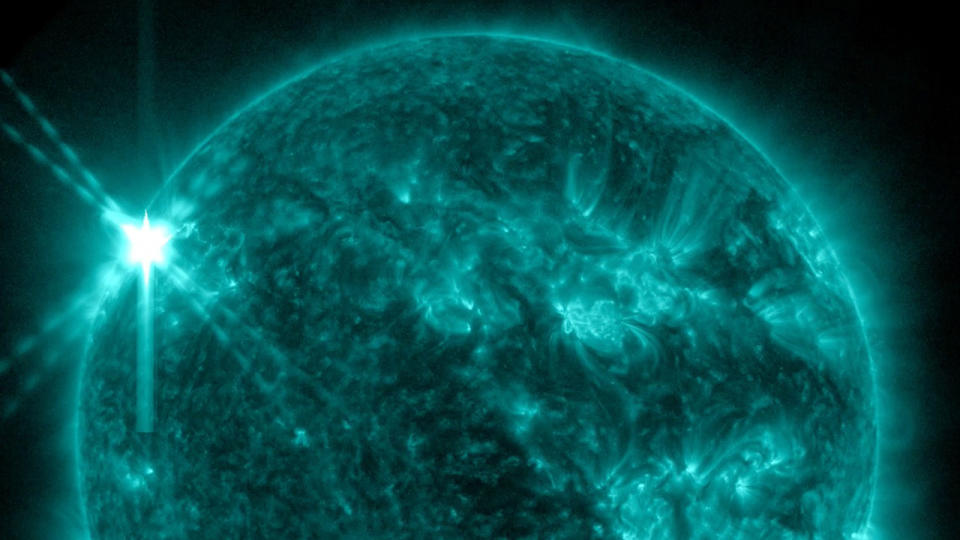Sun unleashes massive X2-class solar flare during geomagnetic storm watch (video)

A massive solar flare erupted from the sun on Friday (Feb. 17) as the Earth was under a geomagnetic storm watch from flares earlier in the week.
The huge solar flare, which registered as a powerful X2.2 sun storm, occurred began at 2:38 p.m. EST (1938 GMT) and reached its peak strength 48 minutes later. From start to finish, the intense solar storm lasted one hour and 12 minutes, and created temporary radio blackouts on the sunlit side of Earth, according to an alert from the U.S. Space Weather Prediction Group operated by NOAA. NASA's Solar Dynamics Observatory captured video of the new flare.
The X2.2 solar flare followed a series of strong flares and a coronal mass ejection from the sun in recent days, including a strong X1.1 flare on Feb. 11. Those sun storms prompted space weather experts to issue a geomagnetic storm warning for northern latitudes from Feb. 16 to Feb. 18 that could make auroras visible as far south as Idaho and New York, as well as affect communications and other systems, according to the alert.
The new flare also unleashed a coronal mass ejection, a massive eruption of solar plasma that can travel 1 million mph, toward the Earth, according to Spaceweather.com, which tracks space weather. It should reach the Earth on Feb. 20, where it may also supercharge Earth's auroras, the site reported.
Related: The sun's wrath: Worst solar storms in history

Friday's solar flare erupted from a new sunspot called Active Region 3229, according to Spaceweather.com.
"Radiation from the flare ionized the top of Earth's atmosphere, causing a deep shortwave radio blackout over the Americas: map," Spaceweather.com wrote in an alert. "Mariners, aviators and ham radio operators may have noticed loss of signal and other unusual propagation effects at frequencies below 30 MHz for more than an hour after the flare."
Related stories:
—What's inside the sun? A star tour from the inside out
—The greatest missions to the sun of all time
—Classes of solar flares: A user's guide (infographic)
Solar flares are huge eruptions of charged particles from the sun and can occur at different strengths. X-class flares like Friday's event are the most powerful type of flare, while A , B and C-class flares among the weakest. The moderate M-class flares are just below X-class events and can amplify the northern lights.
"Flares and solar eruptions can impact radio communications, electric power grids, navigation signals, and pose risks to spacecraft and astronauts," NASA wrote in an update on Feb. 17.
NASA and other agencies regularly monitor the sun's solar flares and other weather with spacecraft like the Solar Dynamics Observatory and SOHO spacecraft (short for Solar and Heliospheric Observatory), which is a joint project of NASA and the European Space Agency.
The sun is currently in an active phase of its 11-year solar cycle. The current cycle is known as Solar Cycle 25.
Email Tariq Malik at tmalik@space.com or follow him @tariqjmalik. Follow us @Spacedotcom, Facebook and Instagram.

